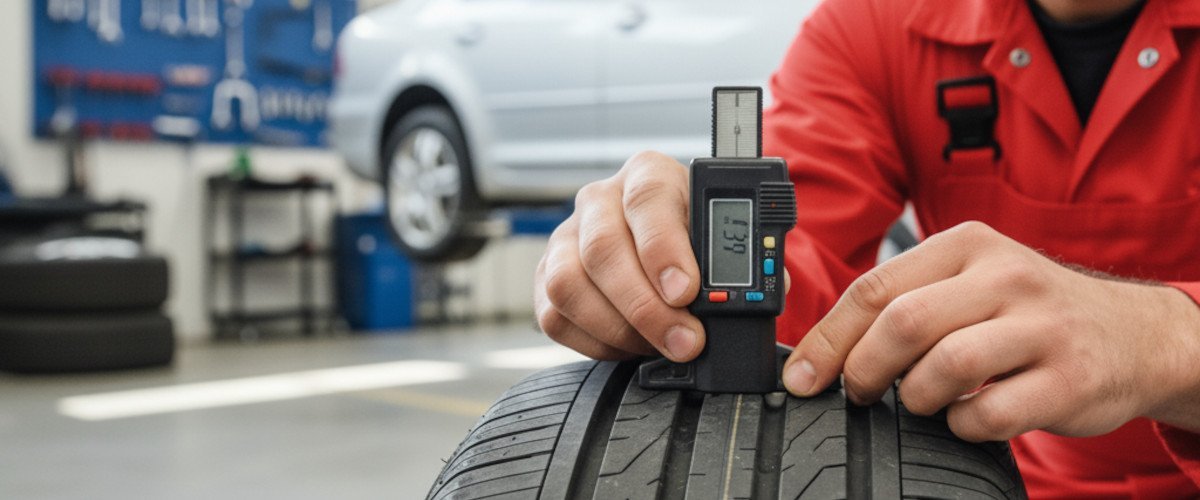| QuickStop Tire

Tire tread depth is one of the most critical factors affecting your vehicle's safety and performance. Understanding how to measure tread depth and knowing when to replace your tires can prevent accidents, improve fuel efficiency, and ensure optimal handling in all weather conditions, especially important in Ottawa's varied climate.
What is Tread Depth?
Tread depth is the measurement from the top of the tread to the bottom of the tread grooves. It's measured in 32nds of an inch (or millimeters in some regions). New tires typically have a tread depth of 10/32" to 12/32", while the legal minimum in most jurisdictions, including Ontario, is 2/32" (1.6mm). However, for optimal safety, especially in wet conditions, tires should be replaced when they reach 4/32" (3.2mm).
How to Measure Tread Depth
There are several ways to measure tire tread depth:
- Tread Depth Gauge: The most accurate method using a specialized tool
- Penny Test: Insert a penny upside down into the tread groove. If you can see Lincoln's head, the tread is too shallow
- Quarter Test: Similar to the penny test but using a quarter. If Washington's head is visible, you have about 4/32" remaining
- Tread Wear Indicators: Most modern tires have built-in wear bars that become visible when tread depth reaches 2/32"
Why Tread Depth Matters
Proper tread depth is essential for several reasons:
- Wet Weather Traction: Tread channels water away from the tire contact patch
- Snow and Ice Performance: Deeper tread provides better grip in winter conditions
- Hydroplaning Prevention: Adequate tread depth prevents hydroplaning on wet roads
- Braking Distance: Worn tires significantly increase stopping distances
- Handling and Stability: Proper tread maintains vehicle control and stability
When to Replace Your Tires
Replace your tires when:
- Tread depth reaches 4/32" for all-season tires
- Tread depth reaches 6/32" for winter tires
- You notice uneven wear patterns
- Tires show signs of damage, cracking, or bulging
- Tires are more than 6 years old (regardless of tread depth)
Checking for Uneven Wear
Inspect your tires regularly for uneven wear patterns, which can indicate alignment issues, improper inflation, or suspension problems. Common wear patterns include:
- Center Wear: Overinflation
- Edge Wear: Underinflation
- Cupping: Suspension or balance issues
- Feathering: Alignment problems
Seasonal Considerations
In Ottawa's climate, consider different tread depth requirements for different seasons. Winter tires should have deeper tread (6/32" minimum) for optimal snow and ice performance, while all-season tires can be replaced at 4/32" but should be monitored more closely during wet weather.
At QuickStop Tire Ottawa, we provide comprehensive tread depth inspections as part of our tire maintenance services. Our experienced technicians can accurately measure your tire tread depth and advise you on the best time to replace your tires based on your driving habits and Ottawa's weather conditions. Regular inspections help ensure your safety and can prevent costly repairs down the road.






